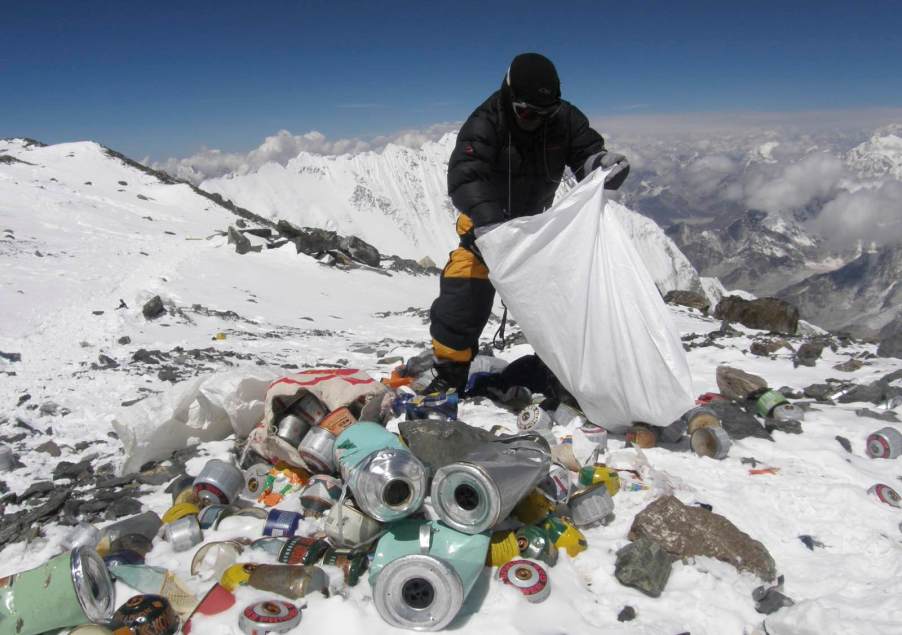
Drones to clear trash from Everest, could save lives
Mount Everest, on the China-Nepal border, conjures images of pristine snow-capped peaks. But it has also been called, “The world’s highest garbage dump.” This spring alone, climbers and porters had to clear 100 tonnes of garbage left on its slopes. Multiple porters have died on these dangerous garbage runs. The Nepal government and Chinese drone-maker DJI have signed an agreement that could change the mountain forever.
Climbing Mount Everest requires tons of…stuff. From food wrappers to discarded camp fuel tanks, to empty oxygen tanks, the mountain is littered with old trash. Getting it off the mountain requires time and energy. Both of which are in short supply at the top of the world. Today, authorities require every visitor pack at least 17 pounds of trash back out. But melting glaciers are exposing even more piles of unsanitary trash, and it’s nearly impossible to keep up.
Porters, who stage gear and supplies for their climbers at the higher camps, carry trash back down as they return to base camp. But there’s one major problem: the Khumbu Icefall. This treacherous river of ice lies between Everest Base Camp and Camp 1. Despite its (relatively) low elevation, it’s claimed 50 lives over the years.
The Icefall is so dangerous under the midday sun, that climbers and porters cross it with headlamps in the early morning or late at night. Even so, a heavy load could be fatal. The Nepal government has limited the amount of weight anyone can carry across the icefall, but the result has been a major bottleneck in efforts to clear trash. It takes 14 porters six hours to carry 500 pounds of trash from Camp 1 to Base Camp.
Enter the Da Jiang Innovations FlyCart 30, a long-range, heavy-lift quadcopter. It can carry the same 500 pounds of trash from Camp 1 to Base Camp in an hour. You can see it in action in the video below:
The Kathmandu Post’s report isn’t clear how many trips that takes. In trial runs, the DJI only carried 65 pounds. At higher base camps the team needed to reduce that to 40 pounds. It’s obvious that these drones will not be a great solution for packing trash down from the higher base camps. So don’t worry, they won’t be photo bombing pictures of Everest’s scenic summit anytime soon. But they will solve a very important environment issue on the mountain, and may even save lives.
Someone out there is thinking, What about the peace and quiet of Everest!? And I know, we think of the Himalaya as pristine. But the honest truth is that the Base Camp (elevation 17,598 feet)–shared by Everest climbers, Lhotse climbers, and tourists–turns into a city ever spring, with about 45,000 folks visiting annually. And with most of those visitors packing out trash, they’ll probably be grateful to see the drones helping out.



